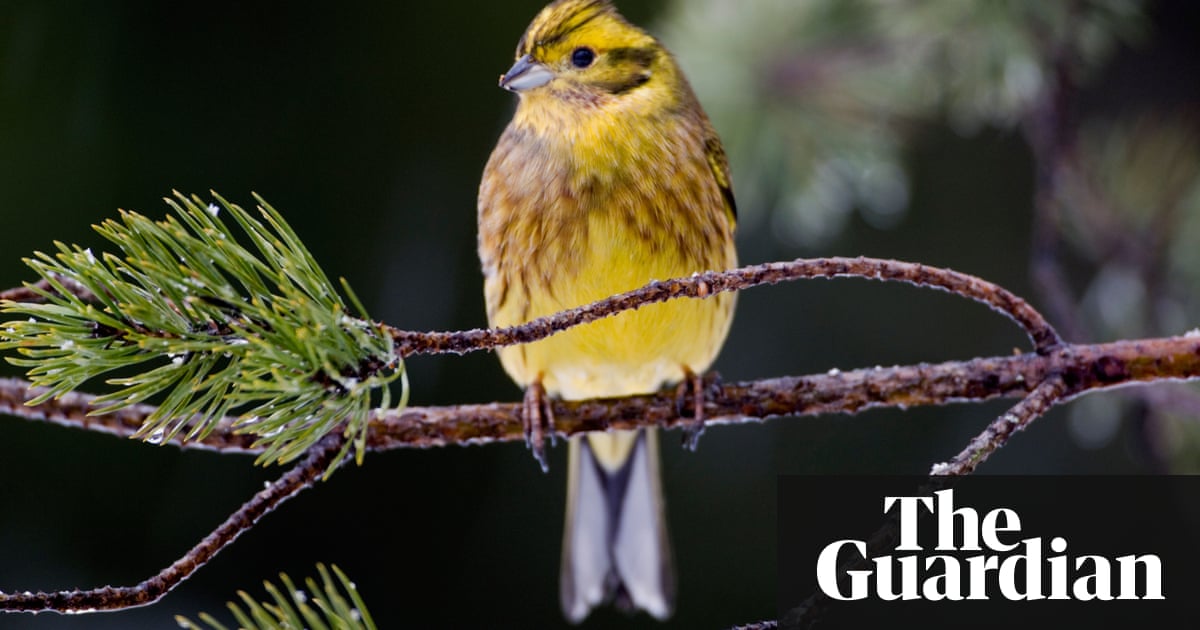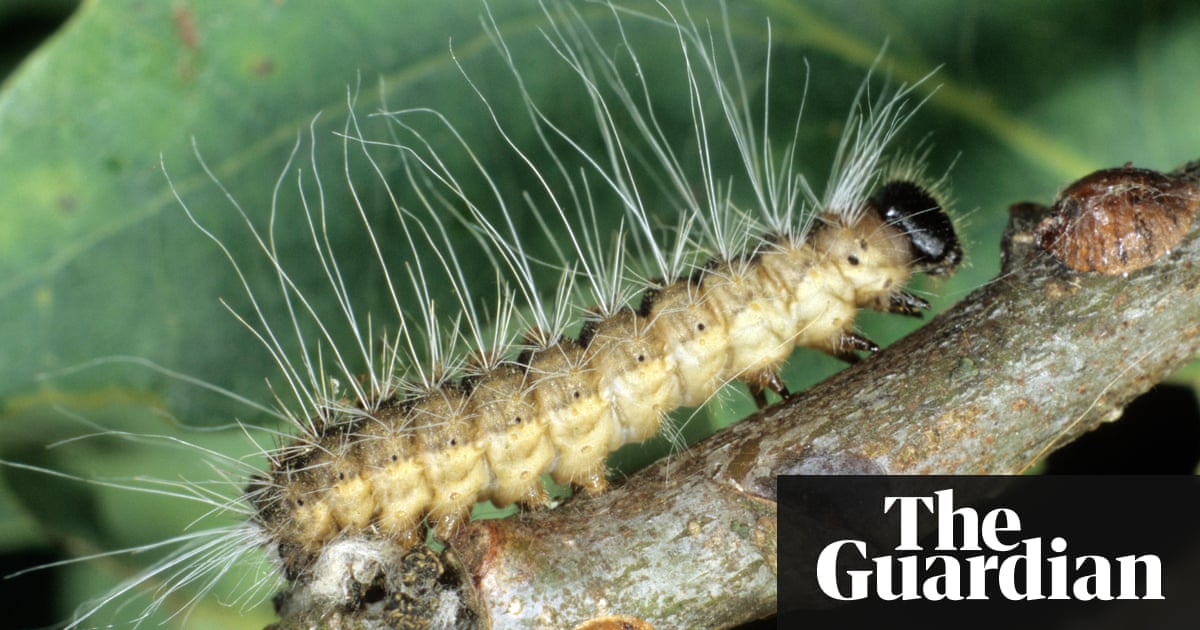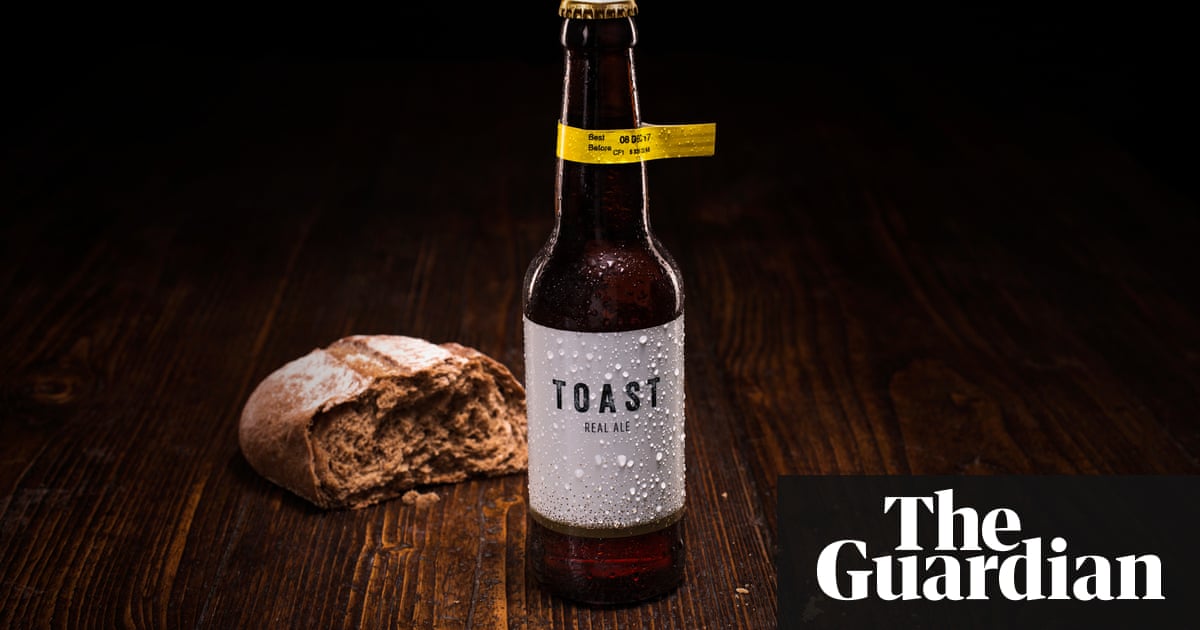Sunday, April 29, 2018
'A Silent Extinction': Finding Peace And Saving Giraffes On A Lake In Kenya

Nearly 40 percent of giraffes were wiped out in one generation. Now, Kenyan conservation efforts are helping to bring them back.
(Image credit: Education Images/UIG via Getty Images)
from Environment : NPR https://ift.tt/2FpwY5G
via IFTTT
Mark Delepine's Berkeley fusion garden
Little did I know that I would become friends with the mastermind behind this garden oasis, Mark Delepine. Mark is very active in the California Horticultural Society, and I've met him on several occasions since my first visit.
Last Sunday Mark and his wife, renowned textile artist Lia Cook, had an open garden/open studio. I jumped on the opportunity to see their garden again.
Read more »
from Succulents and More https://ift.tt/2KoDBc8
via IFTTT
Saturday, April 28, 2018
Blackcap, redstart, yellowhammer: what’s in a bird’s name?

It’s easy to assume, with bird names, that we know what they mean, and often that assumption is quite correct. Woodpeckers peck wood, bee-eaters feed on bees, and whitethroats are indeed white around the neck.
Other names seem almost wilfully obscure: what on Earth does the name puffin mean? Or hobby? Why are turtle doves named after reptiles? And don’t get me started on some of the more bizarre bird names found around the world – from oleaginous hemispingus to zitting cisticola, leaflove to hardhead, and bananaquit to bearded mountaineer.
Yet, as I discovered when I was researching my new book on the origins of bird names, if you dig deep enough, you unearth all sorts of fascinating stories about what the names mean, where they came from and, especially, the men and women who created them.
The origin of some names may, at first, seem obvious, yet are not quite as straightforward as they appear. Take the simplest of all English bird names: blackbird. It’s a bird, and it’s black. Isn’t that all we need to know?
But what about the crow, rook, raven and jackdaw? All of these would have been very familiar to our ancestors, and all appear – at least from a distance – to be black in colour. So why was just one species singled out as the “blackbird”?
The reason for this apparent anomaly is that, until the late medieval period, birds were not called “birds” at all, but fowls – as in Chaucer’s poem The Parliament of Fowls. The word bird (originally the Anglo-Saxon brid), referred only to young fowls, or chicks. Then, sometime around the time Chaucer was writing, this meaning began to shift. From then on, although “fowl” was still used for larger birds such as members of the crow family, “bird” became the norm for all smaller birds, including the blackbird. So, at the time it was named, this really was the only truly “black bird”.
Many of our oldest bird names – including raven, rook and crow – are onomatopoeic: they imitate the sound made by the bird itself. Cuckoo, chiffchaff and kittiwake are other well-known examples. Far less obvious ones include nightjar (from the “churring” sound made by this nocturnal bird), bittern (from its deep, booming call), and the aforementioned turtle dove. “Turtle” is a corruption of the bird’s soft “tur-tur” call, so has nothing to do with the aquatic reptile.
Other ancient bird names relate to a bird’s appearance: its size, colour, shape or distinctive markings. Again, some are obvious: such as great spotted woodpecker, blackcap, long-tailed tit and collared dove.
But with others it takes some linguistic detective work to uncover their true meaning. Take three familiar birds: the yellowhammer, redstart and wheatear. All three names superficially make sense, yet as soon as you look more closely, they become problematic. After all, the yellowhammer doesn’t have an especially loud or percussive song, redstarts are not noticeably jumpy, and I’ve certainly never seen a wheatear in a field of wheat.
The reason these names appear puzzling is down to one of the most important events in British history: the Norman Conquest. Perhaps the greatest change that resulted from this invasion was in our everyday language: within a century or so, Anglo-Saxon had merged with Norman French to create a new, hybrid tongue known as Middle English – the precursor to the way we speak today.
But as the old language fell into disuse, some of its words no longer made any sense. So, by a process called false etymology, people made up new versions, which sounded plausible, even if their original meaning had been lost. One famous non-avian example, the name “dandelion”, is in fact a corruption of the French dent de lion (meaning lion’s tooth, referring to the shape of the plant’s leaves).
The same happened with bird names. Thus, the Anglo-Saxon “yellow ammer” (from the German word for a bunting) became yellowhammer; “red steort” (meaning red tail) turned into redstart; and “wheteres” – literally white arse, changed into wheatear. Norman French also had a major influence on the names of ducks (mallard and wigeon), game birds (pheasant and partridge), and raptors (peregrine and hobby).
What these all have in common is that they were important to the Norman nobility – either as food, or for hunting and sport – so their French names took precedence over the older, English ones. Hobby, for example, comes from the Old French verb hober – meaning to jump about – and refers to this falcon’s dashing, acrobatic flight.
The name hobby also played a role in the naming of the table-top football game Subbuteo. The story goes that when the game’s inventor, Peter Adolph, tried to register his idea at the patent office, he wanted to call it Hobby. When a jobsworth official objected, he cleverly substituted the Latin name of his favourite bird, Falco subbuteo, instead.
From the 18th century onwards, existing names were codified by professional ornithologists who also coined new ones, such as black-tailed godwit or white-fronted goose. A trend also arose for naming birds after people: sometimes those who had discovered the species, such as George Montagu (Montagu’s harrier).
But birds were also named after polar explorers James Clark Ross and Sir John Franklin (Ross’s and Franklin’s gulls), the political radical Thomas Bewick (Bewick’s swan), and the vicar of Selborne, Gilbert White (White’s thrush). As is to be expected, given the patriarchal nature of society at the time, only a handful are named after women.
One notable exception is the woman who gave her name to my book: Winifred Moreau, who during the 1930s studied the endemic birds of Tanzania’s Uluguru mountains, with her ornithologist husband, Reg, and after whom one of the world’s rarest birds – Mrs Moreau’s warbler – is named.
The naming of birds is ultimately a purely human impulse: the birds themselves are, of course, completely unaware of what we choose to call them. Yet, without the wondrous variety of ornithological names, I believe that our world would be a far poorer place.
Ultimately, the names we have bestowed on birds down the ages reflect key aspects of our own lives: our primitive superstitions, myths and legends, invasions and conquests, changes in language, rigorous scientific observation, our love of sound, colour and pattern, and a sense of place.
Last, but certainly not least, some reflect the extraordinary achievements of the men and women after whom they were called – including, of course, Winifred Moreau.
Mrs Moreau’s Warbler: How Birds Got Their Names, by Stephen Moss, is published by Guardian Faber on 3 May
from Environment | The Guardian https://ift.tt/2JDY6At
via IFTTT
Health warning as toxic hairy caterpillars take over woodlands

An infestation of caterpillars that can trigger asthma attacks, vomiting and skin rashes has appeared in south-east England.
Oak processionary moths, in their larval stage now, have been spotted in areas that include Croydon, Twickenham, Epping Forest, Watford, Ealing and several London suburbs. Other infestations have been spotted in Bracknell Forest, Slough and Guildford.
Hairs on the moths contain toxins that cause severe dizziness, fever and eye and throat irritations, health officials have warned. The caterpillars - which feed off oak trees - have distinctive extremely hairy bodies and should not be touched. Sightings should be reported to the Forestry Commission.
The species derives its common name from the fact it lives primarily on oak trees and moves about in nose-to-tail processions, while the first part of its scientific name – Thaumetopoea processionea – comes from thaumetopoein, the irritating protein found in its hairs.
Contact can cause itching, skin rashes and, less commonly, sore throats, breathing difficulties and eye problems which are triggered if people or pets touch the caterpillars or their nests, or if the hairs are blown into contact by the wind. Nests should not be touched without protective clothing, the commission has warned.
The commission said 150 hotspots had been identified and traps to kill off the caterpillars would be set up over the next few days. Hundreds of others spots around London are to be sprayed with insecticides.
The oak processionary moth is a native of southern Europe but its range has been expanding northwards over the past 20 years and it has become established as far north as the Netherlands and northern Germany. It was first introduced – accidentally – to Britain in 2005 from eggs that had been laid on live, imported oak plants. The current infestation has probably arisen from a similar source, the commission has stated.
from Environment | The Guardian https://ift.tt/2vUPnb8
via IFTTT
Raise a toast! New beers made from leftover bread help to cut food waste

Beer and sandwiches have gone together ever since Harold Wilson invited trade union leaders for talks at No 10. Now brewers have gone one better and created a beer made from leftover sandwich bread.
It is a tasty solution to the shocking daily waste of bread, with more than 24 million slices thrown away in Britain every day by consumers alone. Three new beers will soon be available at Marks & Spencer made from surplus bread from its sandwich factory that would otherwise be discarded or turned into animal feed.
Suffolk brewery Adnams is using the crusted “ends” of sliced sandwich loaves – frozen by M&S supplier Greencore in Northampton and then sent to the brewery’s headquarters in Southwold – to create the new beers, which are already on sale in some M&S stores and will soon be available to order online.
Making beer out of bread isn’t new – its history stretches back 4,000 years to a time when brewers and bakers worked together. The difference is that the new beers use bread that would otherwise go to waste.
Bread is made from grains such as barley, wheat and rye – exactly the same raw materials that are used to make beer. In this case, surplus crusts are mashed down into the mix and replace some of the malted barley traditionally used in brewing to create the Used Our Loaf range.
Each batch of the new beer will use 700kg of surplus bread with three times the quantity of malted barley. And using bread has an added benefit of helping to reduce carbon emissions from the energy-intensive brewing process.
The three Used Our Loaf beers are a triple English hop pale ale, a raspberry fruit beer and an Earl Grey pale ale. If the drinks prove popular with customers, the process will be rolled out across a wider range of beers.
The ingredient switch is similar to that of the popular Toast Ale, launched two years ago by Tristram Stuart, founder of the food waste charity Feedback. Stuart was inspired to use leftover bread to make beer by a Belgian brewer who follows the same process. Toast Ale is now brewed in the US, South Africa, Iceland and Brazil. All distributable profits go to Feedback to help end food waste while its original online open-source recipe – which replaces a third of the malted barley with bread (equivalent to one slice a bottle) – has now been downloaded 30,000 times.
Richard Applegate, an M&S beer technologist, said: “Consumers who are fans of beer will be familiar with Toast Ale, and we wanted to find a way to use the surplus bread from our sandwiches in a more useful and environment-friendly way.”
M&S launched pre-packaged sandwiches in Britain in 1981 and now sells 92.7 million a year, of which 72.4 million are conventional sandwiches and the rest baguettes and wraps.
According to official figures, about 10 million tonnes of food is wasted annually in Britain, in homes and in the commercial sector. Bread is one of Britain’s most wasted foodstuffs, with an estimated 44% thrown away because people do not get around to using it in time and worry it is stale.
Fergus Fitzgerald, head brewer at Adnams, said: “Making malted barley is an energy-intense process, therefore by using bread this reduces the carbon footprint; the saving from the three new beers is an estimated 1.2 tonnes of carbon dioxide.”
Toast Ale notably works with Wold Top Brewery in North Yorkshire, one of the UK’s most sustainable breweries. And it recently became the first UK beer company to certify as a “B Corporation”, joining a global movement of people using business as a force for social good. A B Corporation is to business what Fair Trade certification is to, say, coffee or organic certification is to milk, and means the company meets rigorous standards of social and environmental performance, accountability and transparency.
Meanwhile, the brewery has launched a new batch of beer brewed with surplus bread from the EAT sandwich chain.
“It’s great that bakeries and retailers are teaming up with social enterprises and charities to stop so much food being wasted,” said Chris Young of the Real Bread Campaign. “But the real problem lies with the big industrial loaf manufacturers and the supermarkets. We’d like to see far less surplus being generated in the first place.”
from Environment | The Guardian https://ift.tt/2HCgflt
via IFTTT
12 ways to get rid of slugs naturally
Get rid of slugs (and snails) without the use of pesticides that harm beneficial creatures and pollute our waterways. from Latest Items f...

-
The last snow lasted a few days but felt like weeks. It vanished in an instant: one spring-like afternoon it felt as if a conjurer had wh...
-
Our wintry photo of the day comes from Calgary, Canada. Up to its torso in snow, this beautiful white-tailed deer appears perfectly cont...
